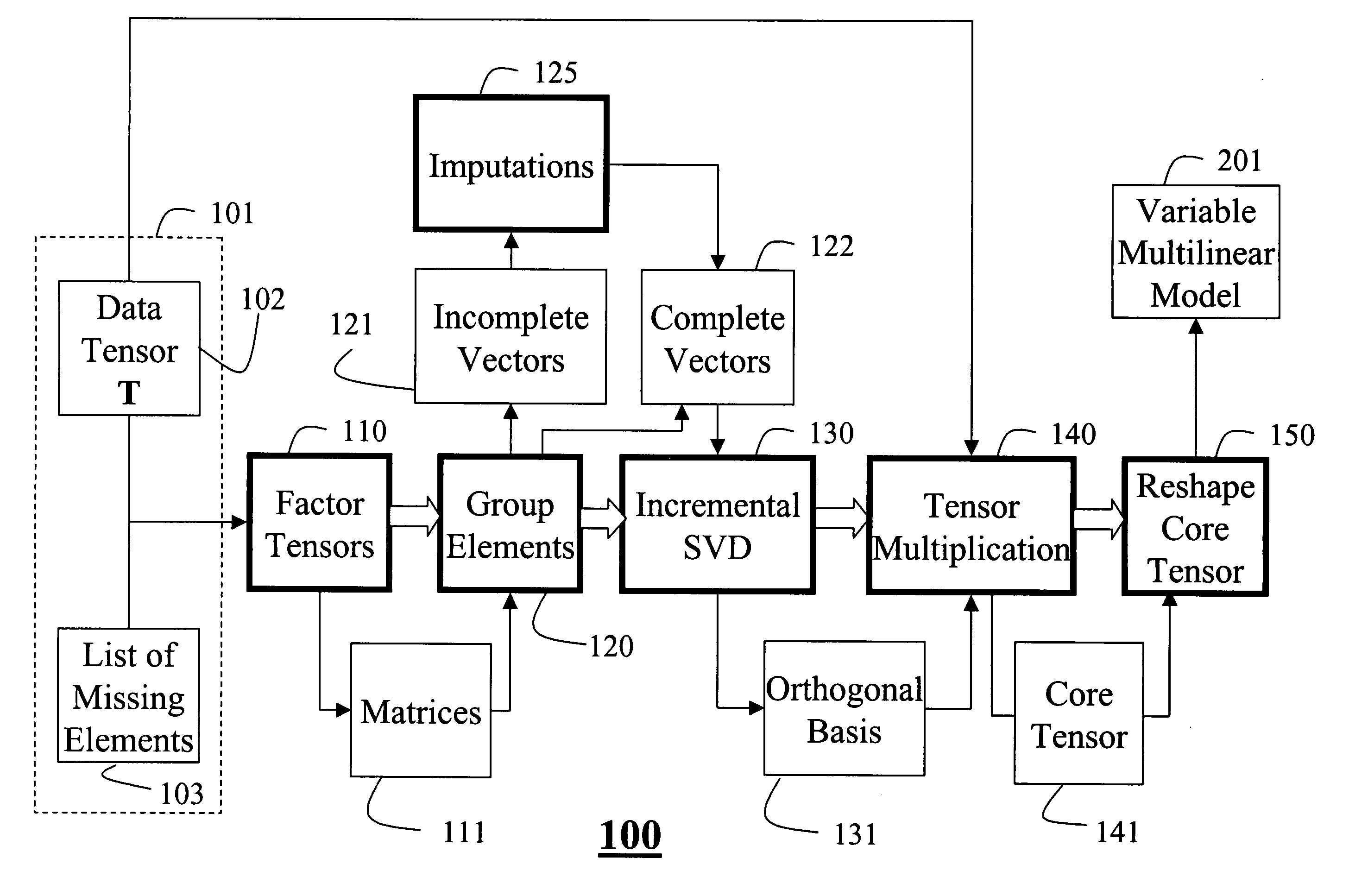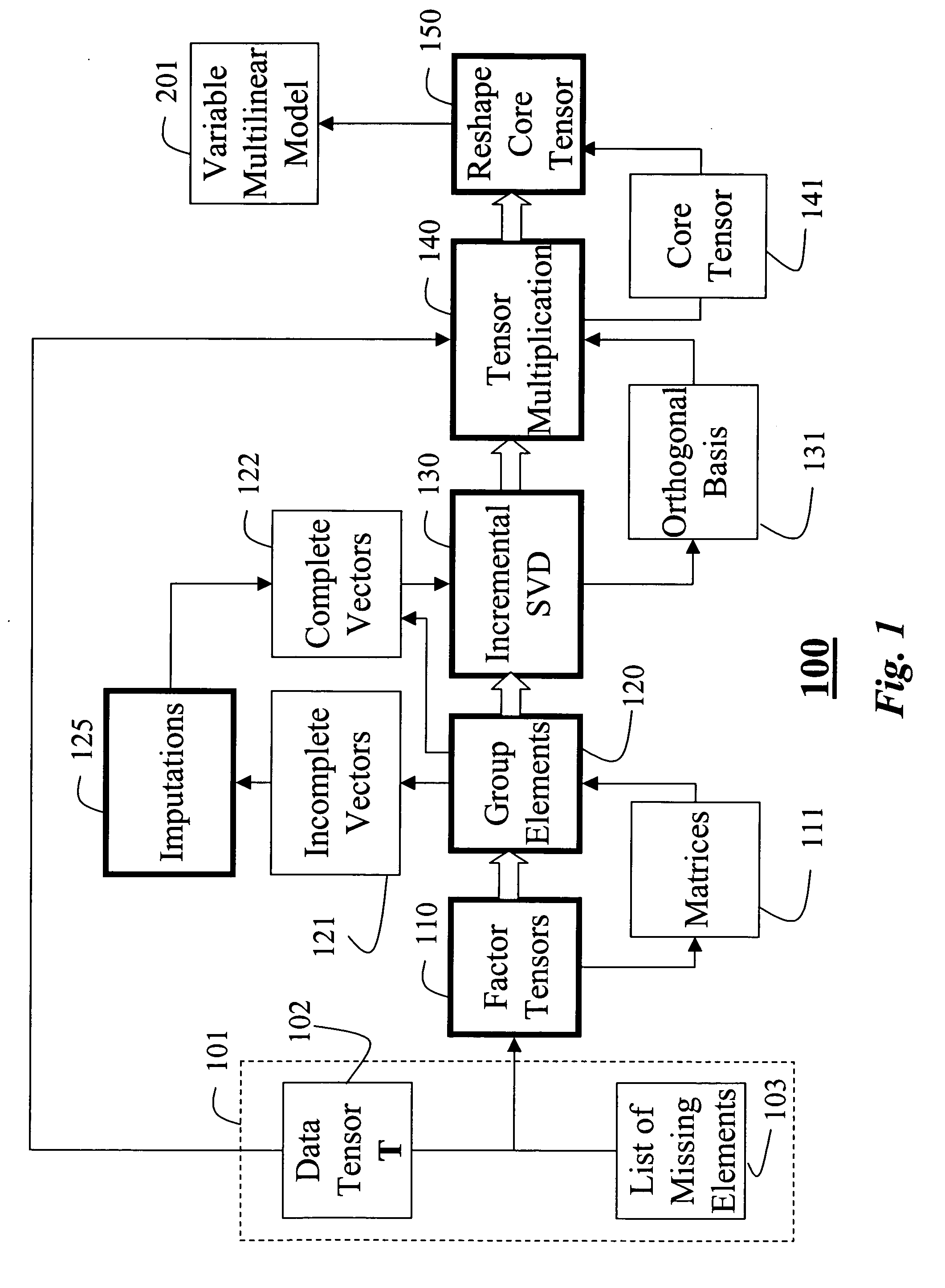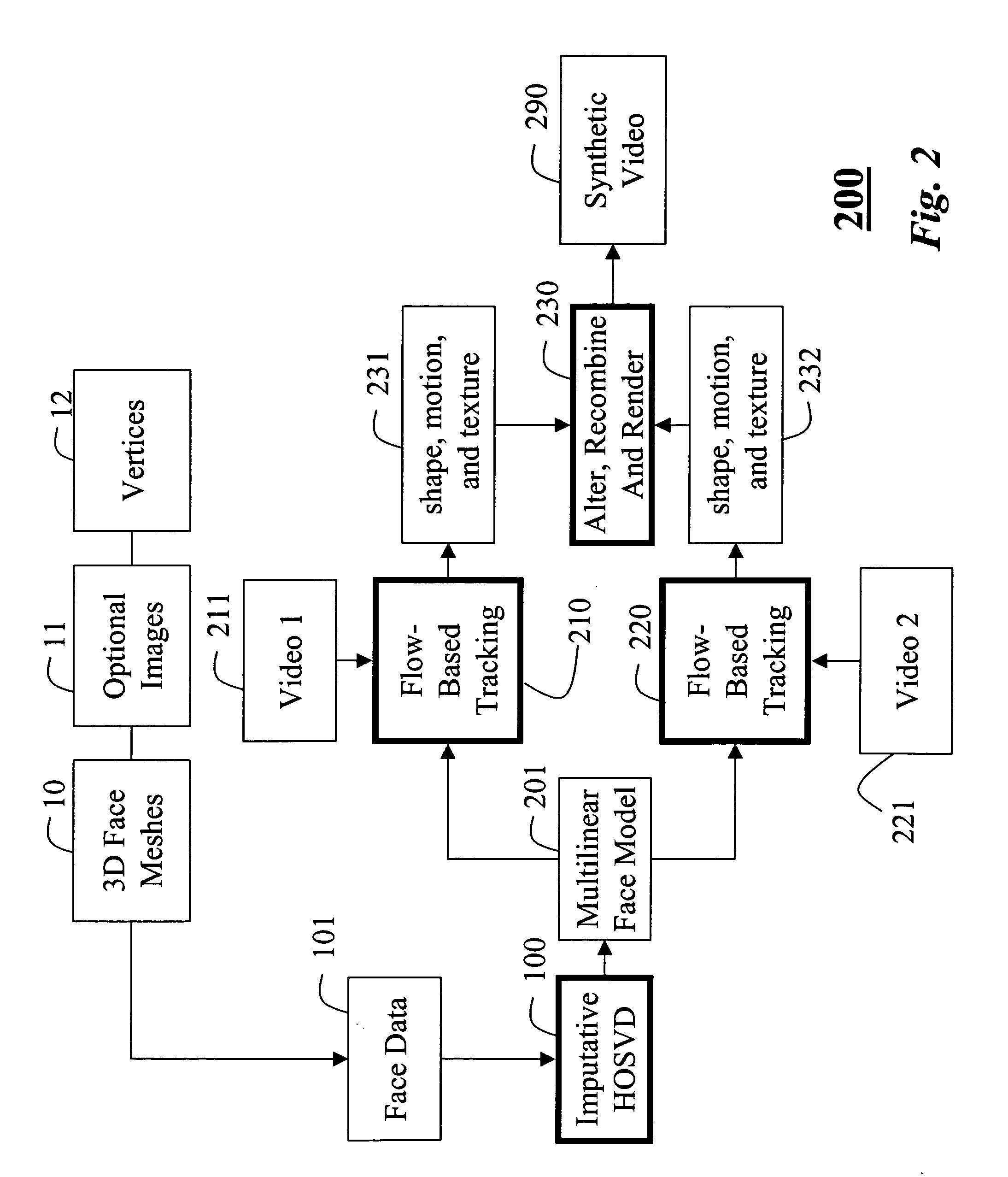Variable multilinear models for facial synthesis
- Summary
- Abstract
- Description
- Claims
- Application Information
AI Technical Summary
Benefits of technology
Problems solved by technology
Method used
Image
Examples
Embodiment Construction
System and Method Overview
Constructing a Multilinear Model for Faces
[0027]FIG. 1 shows a higher-order SVD (HOSVD) 100 that is applied to data 101 stored in a memory to generate a variable multilinear model 201 according to the invention. The input data includes a data tensor 102 and, optionally, a list of missing elements 103.
[0028]FIG. 2 shows the method 200 for applying the multilinear model 201 to videos 211 and 221 to synthesize a new video 290. The model 201 is constructed from a set of facial geometry meshes 10, optional images 11 and vertices 12.
[0029] The data tensor 102 is flattened 110 to construct matrices 111, see also FIGS. 4-6. The columns of the matrices are vectors. As shown in FIG. 4, for a bilinear face model, the vertices 12 are organized in the tensor 102 by the appearance of individuals with different identities (ni) along the vertical-axis 401, expressions (ne) along the horizontal axis 402, and three dimensional mesh vertices (3nv) along the depth axis 403...
PUM
 Login to View More
Login to View More Abstract
Description
Claims
Application Information
 Login to View More
Login to View More - R&D
- Intellectual Property
- Life Sciences
- Materials
- Tech Scout
- Unparalleled Data Quality
- Higher Quality Content
- 60% Fewer Hallucinations
Browse by: Latest US Patents, China's latest patents, Technical Efficacy Thesaurus, Application Domain, Technology Topic, Popular Technical Reports.
© 2025 PatSnap. All rights reserved.Legal|Privacy policy|Modern Slavery Act Transparency Statement|Sitemap|About US| Contact US: help@patsnap.com



